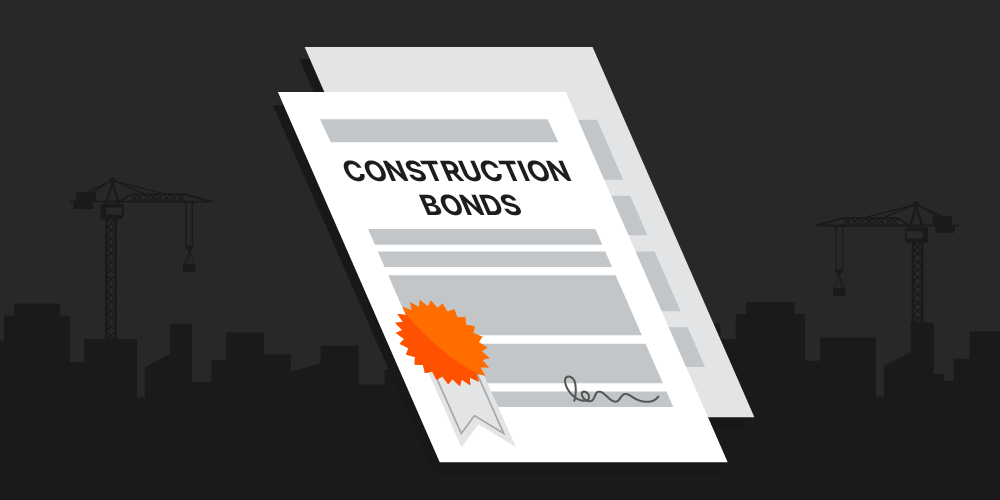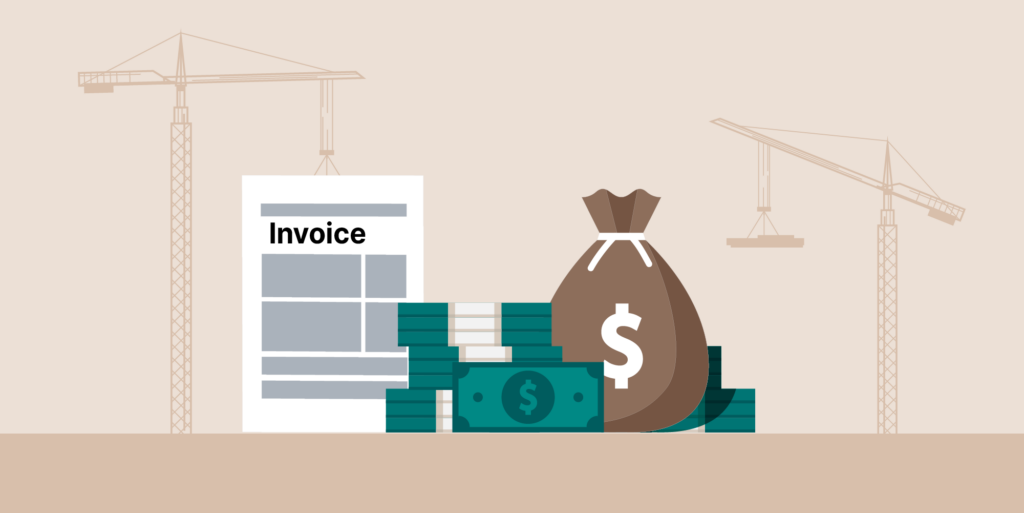— 8 min read
How Construction Payment Bonds Work — and Why They Matter
Last Updated Sep 20, 2024
Last Updated Sep 20, 2024

From the smallest home renovation to the largest public works project, the world of construction is backstopped by one fundamental principle: Trust. Owners and public agencies must be able to trust their general contractor can do the agreed-upon work, and specialty contractors and suppliers must trust they’ll be paid in full.
Many mechanisms and financial instruments help address the issue of trust across the construction industry, including bonds. While the construction world uses many types of bonds, payment bonds are one of the most common.
In this article, we will explore payment bonds and how they protect project owners, contractors and suppliers from financial risk.
Table of contents
What is a construction payment bond?
A payment bond is a financial guarantee issued by a surety company on behalf of a contractor, ensuring that subcontractors and suppliers will be paid for their services and materials.
In the (hopefully rare) event that a contractor fails to meet their payment obligations, the payment bond acts as a safety net, providing those owed money on a building project with recourse to be made whole.
Parties Involved in Payment Bonds
Understanding the parties involved in payment bonds is key to comprehending how they function. A payment bond involves three parties: the principle, the surety and the obligee.
- The principal: Usually a general contractor on a project, the principal is the party whose ability to pay subcontractors and suppliers is guaranteed by the payment bond.
- The surety: The company or financial institution issuing the bond is the surety. This can be a bank or other financial institution or an insurance company. Although, it is important to note that a payment bond is not insurance in the traditional sense (i.e., a bond does not take the place of liability insurance). Many surety companies specialize solely in construction bonding.
- The obligee: The obligee is an entity that requires a contractor to obtain a payment bond in order to be considered for a project. This is usually a federal or state agency, government or regulatory body.
Why Payment Bonds Exist
Though payment bonds may be obtained by contractors working on private or commercial projects, the majority of these bonds are obtained by contractors working on public projects. This is because in the case of public works projects, a mechanics lien is unavailable as a remedy for subcontractors and/or suppliers who go unpaid.
For example, a subcontractor doing electrical work on a strip mall or housing development who goes unpaid for their efforts can then file a lien on that property. The lien provides the subcontractor with an interest in the property itself – meaning the property can’t be transferred or sold without first satisfying the lien. In extreme cases, a lien can even force foreclosure.
But a subcontractor doing the same work on a government-owned school or hospital who doesn’t receive proper payment from the general contractor overseeing the project cannot file for a lien. Liens are not available for publicly-held property. Instead, the subcontractor would make a bond claim with the surety company to recover any unpaid amounts that are due.
Stay updated on what’s happening in construction.
Subscribe to Blueprint, Procore’s free construction newsletter, to get content from industry experts delivered straight to your inbox.

Laws Governing Construction Payment Bonds
At the federal level, the law governing bonding on public construction projects is The Miller Act (40 U.S.C. § 3131). Passed in 1935, the Miller Act requires that a prime contractor seeking to work on a project valued at $100,000 or more furnish a payment bond for the government's protection.
All 50 states have their own so-called “Little” Miller Act — a colloquial term derived from the notion that these pieces of state legislation regulate bonding on their state’s public works projects. Though often similar in operation, Little Miller Acts exist on a spectrum, specifying different minimum contract amounts for which contractors must obtain bonds, as well as the value of those bonds.
For example, according to Texas statute prime contractors generally must furnish a payment bond on any state project where the contract is over $25,000. However, in Pennsylvania the laws require a payment bond be obtained for any project valued at more than $5,000.
All jurisdictions in the United States require some level of bonding in order to be considered for a public works project past a certain contractual value.
Payment vs. Performance Bonds
In addition to a payment bond, public construction projects will typically require a contractor to obtain a performance bond.
A performance bond is similar to a payment bond in that it is a financial guarantee issued by a surety, again typically at the direction of an obligee — but in the case of a performance bond, it is the contractor’s ability to complete the work as agreed upon. If the contractor does not fulfill the contract as agreed, the owner or public agency can then turn to the surety to engage another contractor or for financial recompense.
How to Obtain a Payment Bond
If a general contractor is entirely new to the industry and/or to a geographical region, or is simply looking to make a change in their surety arrangement, that contractor will usually begin their bond search by meeting with either a bonding agent or a surety broker.
Bonding Agent
A bonding agent represents a specific surety, and assesses the financial health of a general contracting company. Bonding agents will review financial reports and evidence of past performance to determine how much bond the surety should extend.
As the relationship between a bonding agent and general contractor develops over a number of successfully completed projects, they will usually begin offering further bonding (i.e., guaranteeing more money on the contractor’s behalf) to the general contractor.
Surety Broker
A surety broker acts on behalf of a general contractor, presenting a range of surety options with varying terms and bonding amounts. Comparing surety options can certainly benefit contractors, though establishing a relationship with an agent remains paramount in an industry dependent on reputation and trust.
The Cost of a Payment Bond
Like most agreements in the construction industry, a bond cost is negotiable.
However, the standard rate a surety will typically charge a general contractor is between 1-3% of a project’s total value. So, if a general contractor is overseeing the building of a school budgeted for $10 million, obtaining a payment bond for that project will cost between $100,000 and $300,000.
The rate a surety charges a contractor for obtaining a payment bond will depend on the contractor’s past performance, reputation within the industry, and even on the specific relationship between the contractor and the bonding agent.
Bonding as a Soft Revenue Cap
In the world of contractors looking to take on public works projects, bonding is the lifeblood of the industry. Because public works projects require general contractors to obtain bonding, the amount of bonding extended to a GC by a surety effectively operates as an upper limit to the amount of public works projects that GC can take on at any one time.
If a general contractor’s business is primarily (or entirely) in the public sector, the amount of bonding that contractor can secure becomes a cap on the amount of revenue the contractor can take in.
Courses about construction.
For construction.
Unlock your career potential with our free educational courses on Health & Safety, Data in Construction, and more.
How to Make a Claim Against a Payment Bond
Navigating the process of making a claim against a payment bond can be a complex and nuanced task, yet it is a crucial option available to protect the interests of subcontractors and suppliers. Here are five steps an unpaid subcontractor or supplier should go through to make a claim against a payment bond.
1. Send a preliminary notice.
A preliminary notice is a notice sent by a contractor or supplier to a property owner, surety and/or general contractor, officially informing the recipient of their work on a project.
Some states require that a preliminary notice be filed at the outset of a contractor or supplier’s work on each project in order to secure the right to make a payment bond claim. Regardless, sending a preliminary notice on every job is a good habit for all contributors to a construction project to get into.
2. Send a notice of intent.
A notice of intent is a type of demand letter, informing the letter’s recipient of a subcontractor or supplier’s intent to file a payment bond claim unless they are paid for the time and/or materials they contributed to a project.
A notice of intent is effectively a final warning: If the sender remains unpaid, a payment bond claim is going to be filed.
3. File the claim.
The specific procedures (and deadlines) for filing a claim against a bond vary from state to state, but the process almost always involves sending the claim document via certified mail (return receipt requested) to the required parties.
4. Send an intent to proceed.
After filing the official claim, unpaid subcontractors or suppliers with valid bond claims may choose to send an additional letter detailing any further action they intend to take should their claim remain unresolved. This usually means threatening to enforce the claim by filing a lawsuit.
5. Enforce the claim.
If the bond claim was ignored or rejected, filing suit against the bond is sometimes necessary. Typically a suit must be filed within one year — though some states are more restrictive. It’s important to know the specific requirements of your state.
For a quick summary of these steps, watch Levelset’s video on how to make a payment bond claim.
Payment bonds help protect projects.
Payment bonds play an indispensable role in the construction industry, serving as a safeguard for all parties involved. They ensure that subcontractors and suppliers receive payments, protecting their financial interests and promoting fair labor practices.
For project owners, these bonds minimize the risk of liens and legal entanglements, offering peace of mind that their project will proceed smoothly. The requirement of payment bonds encourages ethical business practices and aids in the prequalification of contractors, ensuring that only those with proven financial stability can undertake significant construction projects.
Ultimately, payment bonds are not just a financial tool but a cornerstone of trust and security in the complex construction world.
Was this article helpful?
Thank you for your submission.
88%
12%
You voted that this article was . Was this a mistake? If so, change your vote here.
Scroll less, learn more about construction.
Subscribe to The Blueprint, Procore’s construction newsletter, to get content from industry experts delivered straight to your inbox.
By clicking this button, you agree to our Privacy Notice and Terms of Service.
Categories:
Written by
Ryan O'Donnell
Ryan O'Donnell works at Procore as Senior Product Manager, Financials. He has spent his career working in construction finance -- including roles as Controller & CFO for Terminal Construction Corporation in NYC, AVP of Commercial Real Estate at M&T Bank, and Senior Auditor for Kiewit Infrastructure Group. Ryan earned his MBA in Accounting & Finance from Rutgers University. He lives in New York.
View profileMatt King
Matt King is a professional writer whose work has appeared in The Village Voice and The American Lawyer, as well as on PBS FRONTLINE. He holds an M.S. in journalism from Columbia University, and a J.D. from Northeastern University's School of Law. In his office hangs a medal from the Brooklyn Pinball Championship (on the back it says participant).
View profileExplore more helpful resources

A Contractor’s Guide to Construction Bonds
Many construction projects today require that contractors provide bonds. A construction bond is a form of protection for the owner against non-payment, lack of performance, company default, and warranty issues....
Improving Project Monitoring with Construction Quantity Tracking
Once a construction project is underway, builders need to closely monitor the project’s progress and make sure it’s staying on schedule and within budget. Quantity tracking helps construction leaders manage...

Streamlining Construction Projects with Effective BIM Coordination
The old saying goes: if you fail to plan, you plan to fail. Construction professionals know this better than nearly anyone. To take a project from a vision in an owner’s...

Construction Invoice Factoring: A Quick Guide
Construction companies need to maintain consistent cash flow. Projects can take years to complete, and delays and unforeseen events may keep expenses mounting. Adding to this load are typically high upfront...